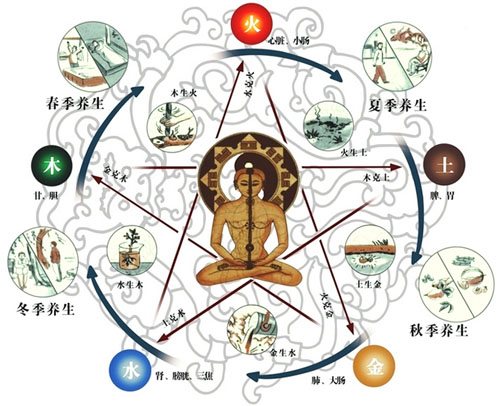The occurrence, development and changes of disease, according to the theory of yin and yang, lie in the imbalance between yin and yang. Clinically all kinds of diseases, including pathological changes of complexion, voice and pulse condition as well as the nature of diseases, can be generalized and analyzed with the theory of yin and yang.
Diagnostically, the theory of yin and yang can be used to analyze the data collected with the four diagnostic methods and differentiate the nature of disease, which is an important method for making correct diagnosis. That is why it is said in Huangdi Neijing that one should "observe complexion and take pulse, differentiating yin and yang first." Take complexion, voice, disposition, nature of disease and pulse for example.

Bright complexion pertains to yang while grayish complexion to yin sonorous voice pertains to yang while low and weak voice to yin preference for cold and aversion to heat pertain to yang while preference for heat and aversion to cold to yin; floating, slippery, rapid and full pulse states pertain to yang while deep, unsmooth, slow and thin pulse conditions to yin.
In syndrome differentiation, syndromes are usually differentiated from the aspects of yin and yang, external and internal, deficiency and excess, cold and heat which are the general principles for differentiating disease and syndrome, known as "syndrome differentiation with eight principles". Among these eight principles, yin and yang are regarded as the general ones. According to such a gradation, external syndrome, excess syndrome and heat syndrome are yang syndromes while internal syndrome, deficiency syndrome and cold syndrome are yin syndromes.
The theory of yin and yang are also used to differentiate visceral syndromes. Take visceral deficiency syndrome for example. It can be divided into heart-yin deficiency, beart-yang deficiency, kidney-yin deficiency, kidney-yang deficiency, spleen-yang deficiency and liver-yin deficiency. Clinically the basic principle for differentiating syndrome is to differentiate yin syndrome and yang syndrome.







